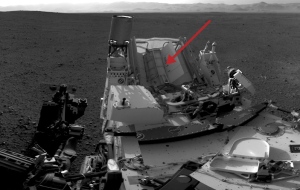 |
| Reviews and Templates for Expression We |
Out of disorder comes electricity
Laptop owners and car mechanics alike know that heat is a major by-product of any kind of work. In power stations, for example, only one-third of the energy that goes into the generator comes out as electricity — the rest radiates away as 'waste heat' before it can turn a turbine.
For decades, physicists have toyed with ways to convert heat into electricity directly. Materials known as thermoelectrics use temperature differences to drive electrons from one end to another. The displaced electrons create a voltage that can in turn be used to power other things, much like a battery. Such materials have found niche applications: the Curiosity rover trundling about on the surface of Mars, for example, uses thermoelectrics to turn heat from its plutonium power source into electricity.
Thermoelectrics are not, however, efficient enough to be used everywhere. Existing technologies can turn only 5–7% of heat energy into electricity, much less than the conversion efficiency of technologies such as solar panels.
Building a better thermoelectric depends on finding materials that conduct electricity, but not heat. According to Mercouri Kanatzidis, a chemist at Northwestern University in Evanston, Illinois, the way to do that may be to introduce disorder into the materials' structure.
Kanatzidis and his team began with one of the most well-known thermoelectrics: lead telluride (PbTe), which usually has an ordered lattice structure. The researchers scattered in a few sodium atoms to boost the material's electrical conductivity, then shoved in some nanocrystals of strontium telluride (SrTe), another thermoelectric material. The crystals allowed electrons to pass, but disrupted the flow of heat at short scales, preserving the temperature gradient.
The final step was to stop heat flow over longer scales. To do this, the team created a fractured version of their pretty thermoelectric crystal. The fracturing did the trick: the cracks allowed electrons to move but reflected heat vibrations in the crystal. The material had a conversion efficiency of about 15% — double that of normal PbTe thermoelectrics.
"This is a significant advance," says Jeff Snyder, a materials scientist at the California Institute of Technology in Pasadena. In recent years, other teams have made nanostructured materials with efficiencies close to the latest work, but the Kanatzidis group's effort is the highest yet. Snyder says that the group's approach of introducing disorder is clearly the way to increase efficiency. "What they're describing is what we modern thermoelectricians believe is the perfect thermoelectric," he says.
That doesn't mean that the material is ready to be used on the next Mars rover, Snyder adds. The sodium introduced to make electrons move is highly reactive, and can degrade the material, particularly if it accumulates along the fractures designed to stop heat flow. NASA has been looking at similar approaches for future space missions, but the agency is not yet convinced that the approach is ready for launch, he says.
Kanatzidis is more optimistic. "I think the materials that we have today are good enough for applications," he says. "My belief is that in about two to three years we will have something."
|
|
|
|
Copyright 2011 Energy and Technical Services Ltd. All Rights Reserved. Energyts.com |